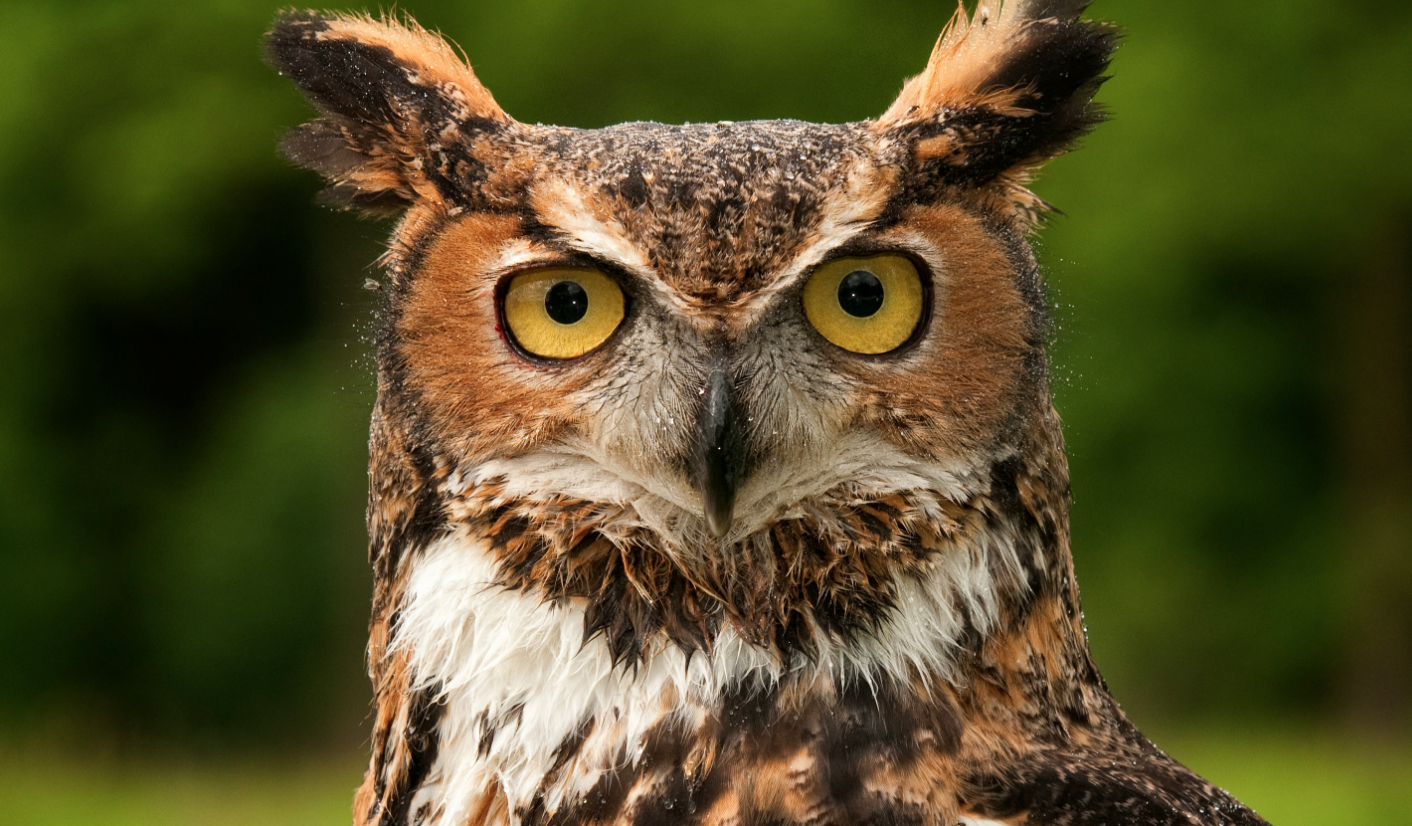Tiger Owl
Contributed by Bill Hamilton
One morning, this past February, I looked out my back window at the lingering snow and saw a large shape up in the upper branches of one of my black locust trees. It looked like a medium sized dog stuck up the tree! With binoculars I quickly saw the sharply hooked beak and the two “ear” tufts on the top of her head. It was a Great Horned Owl, also called the “Tiger Owl,” uncharacteristically out during daylight.
I call her “she” because of her size. Females are larger than males, and this owl was huge. Almost two feet tall and extremely square (and, when she did fly, her wing span was close to five feet).
I watched her for about fifteen minutes. She turned her head from side to side (owls have excellent, binocular vision but are not able to move their eyes about in the eye sockets) as she scanned the yards below for mice, voles, squirrels, or anything else that might be moving around on top of the snow. Great Horned Owls also have incredible hearing and can easily pick up rustlings in the dry leaves or tiny, rodent footfalls on or even under crusted snow. Once prey is spotted (and they are not picky about the types or sizes of prey species. They will take almost anything from tiny birds to skunks to even small cats and dogs) they swoop down and use their powerful talons to kill the animal (they exert four or five times the force in their talons than the grip of a large human!). Great Horned Owls have also been known to hop along on the ground scaring up and grabbing small rodents. Small prey is swallowed whole, and bones and fur are later regurgitated in a pellet.
February is the start of the mating season for Great Horned Owls. They have been known to start calling to their mates as early as late October and are one of the earliest mating avian species in North America. I'd heard a few great horned owl calls over the past two weeks, but the brutally cold temperatures cut short the nighttime dialogs. Mating typically occurs in January or February with the owlets hatching in the late winter or early spring. Nesting sites are whatever is available: old crow or hawk nests, squirrel nests or tree holes, caves, or even human-made shelters.
As I watched the owl a small flock of cardinals flittered in and around the locust branches above and below her. The cardinals (a mix of males and females) were very agitated and were undoubtedly making quite a large fuss. Mobbing is a very effective strategy for small birds in dealing with large, avian predators. The noise around the owl (or hawk) removes any chance of a sudden grab or surprise attack and will, eventually, drive the predator away.
And, after a few minutes of cardinal swarming, the owl opened up her incredible wings and soared off to the east and out of sight. The cardinals then perched up in the locust tree (in and around the exact spot where the owl had been settled) for the next half hour. Victory!
